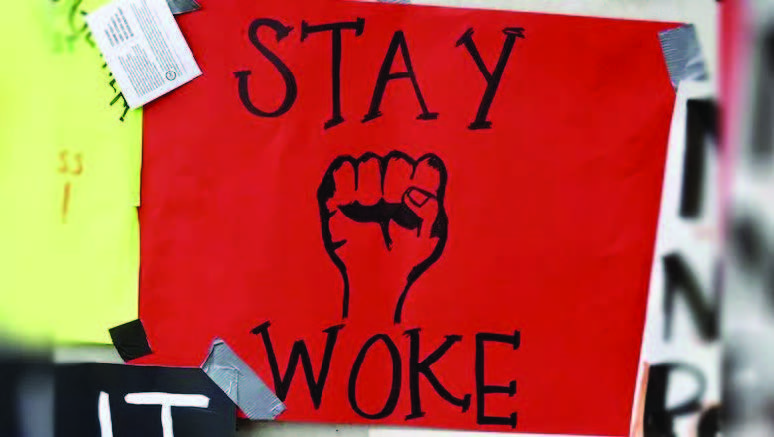
Is “woke” identity politics squeezing out religious practice at elite American colleges? That is the contention of Anna Keating, a former Catholic chaplain at an unnamed elite college in New England, in a controversial blog article in the Hedgehog Review (May 4). Although only focusing on one college, Keating has subsequently said in a video interview [see below] that what she witnessed is fairly common at other elite institutions. Arriving as a liberal chaplain at a progressive secular college, with traditional views of what a liberal-arts education in the humanities was about, Keating thought she was going to help students explore “Western spirituality.” “I saw religion as another identity to be explored and therefore essential to a student’s experience and self-definition.… And for a while at least, it seemed as though we were filling a need for students interested in the religious community.” But Keating saw the pluralistic liberalism that relegated religion to the private sphere being eroded “by what the writer Wesley Yang calls ‘the successor ideology.’ Rooted in the critical race theory of the Ibram X. Kendi and Robin DiAngelo school, this ideology is far less tolerant of Jewish kids gathering for Shabbat or Catholic kids for Mass. Under the influence of this form of ideological thinking, students were coming to view religious services or religious observance as part of the structure of ‘white supremacy.’” One student told Keating that it was “taboo to explore Western spirituality, especially in liberal circles. I’m careful who I tell about it.” Other students asked her not to take photos of Mass and post them on social media, because they didn’t want to be “outed” as Catholic.
Keating argues that the “drive to eliminate whiteness, masculinity, and heteronormativity on college campuses has made entire religious traditions suspect, particularly those that are absurdly lumped together as part of ‘Western spirituality’—despite the inconvenient fact that the majority of the world’s one billion Catholics are neither white nor western, or that Judaism includes Africans and Arabs and other non-European peoples.” One goal of the new brand of antiracism is “leveling group differences,” and college administrators told Keating that members of certain religious groups were overrepresented on campus. This was the reason why the college wanted to get rid of chaplaincy programs and replace them with “wellness” workshops. Because Jewish and Catholic ministries had more students and could get outside funding, Keating was told that “in order to be antiracist we have to have equal resources for Hindu students, Muslim students, Buddhist students, or we need to do away with Spiritual Life groups all together [sic].” Keating concludes that “[u]ltimately, the successor ideology benefits academics and administrators who use it to protect themselves from any possible criticism or censure for being insufficiently antiracist, but it provides students with nothing more than an ersatz, feel-good simulacrum of diversity and equity. The cost of entry into America’s elite spaces, the college degree, should not mean leaving behind the traditions and ‘metanarratives’ that have sustained your ancestors—unless, of course, that’s what you have freely chosen.”
In his e-newsletter, Reactions (May 14), New York Times columnist Ross Douthat writes that he was struck by Keating’s article “not because I think it describes the fullness of elite reality but precisely because it doesn’t, because it reflects instead a novel tendency within that culture, not nearly dominant as yet.” He writes that “to be religious in some traditional or semi-traditional way is not necessarily all that socially difficult in the meritocratic day to day. There are flourishing religious communities, conservative as well as liberal-leaning, on most elite college campuses. I know plenty of serious religious people who move through elite-level graduate programs and professional schools without encountering overt hostility, even if they tread carefully in various situations….” Yet “there are social and professional costs for the public expression or endorsement of a few particularly unpopular, understood-as-bigoted teachings that are common to Christianity, Judaism and Islam [such as opposition to homosexuality]. But those same costs don’t apply to practicing and participating in those traditions, even in their more conservative expressions. Whereas under the emergent, new-progressive circumstances described by Keating, the costs would increasingly apply more broadly: Thus to simply attend Mass, even under the auspices of a liberal Catholic chaplaincy, would become an act of association with bigotry—plus colonialism plus white privilege plus a longer list of Western sins—that risks social sanction, and in its administrative forms liberalism would increasingly look for excuses to marginalize any faith with those associations that didn’t stage a complete break with the Christian or Western-religious past.” While this “animating impulse” is real enough in certain quarters, Douthat concludes that he would make a “bet against this particular antireligious future coming into being outside the true progressive hothouse.”
(Hedgehog Review, https://hedgehogreview.com/blog/thr/posts/the-problem-with-westernreligions-on-campus; a video interview with Keating can be seen at: https://iasculture.org/events/hedgehog-noontime-discussion-5)

Source: King’s College London, 2021.